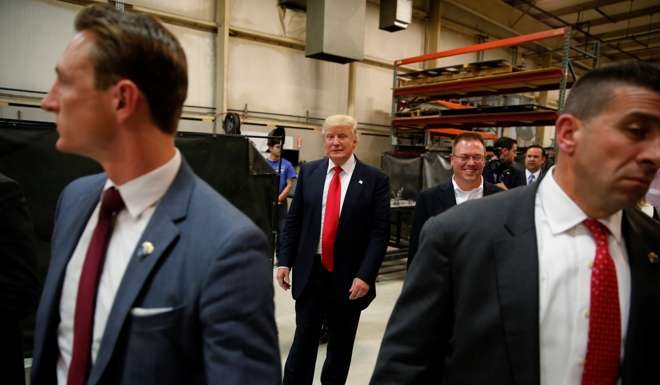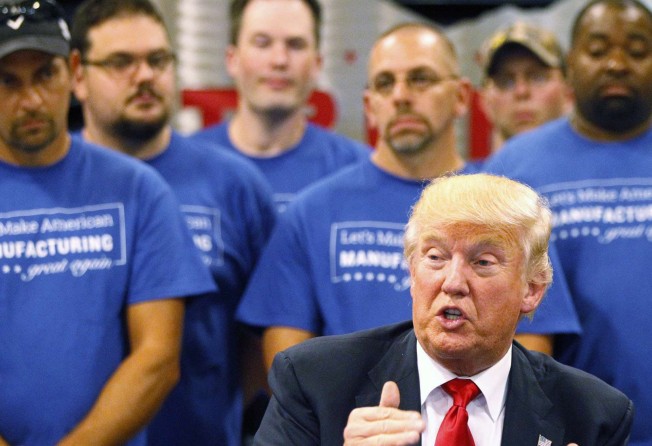
Trump would expand controversial ‘stop-and-frisk’ tactic to reduce crime in black communities

Donald Trump detailed his plan to dramatically reduce black-on-black crime in America on Wednesday, saying he would seek to expand a controversial stop-and-frisk program across the nation as US president.
During a town hall held by Fox News’s Sean Hannity on Wednesday afternoon in Cleveland, Ohio, the Republican candidate told an audience member that he “would do stop-and-frisk” in black communities faced with high levels of violence.

The tactic had been used for years, and its implementation escalated to unprecedented levels during the three-term administration of former Mayor Michael Bloomberg. He and former Police Commissioner Raymond Kelly credited it for the city experiencing 12 consecutive years of decreasing crime.
Even as they made this assertion, as protests from minority community leaders grew more intense, they cut the practice by about 72 per cent from its peak in 2011 to 2013 (The former mayor is founder and majority owner of Bloomberg News parent Bloomberg LP).
Trump is a longtime advocate for stop-and-frisk tactics. “Stop and frisk works. Instead of criticizing @NY_POLICE Chief Ray Kelly, New Yorkers should be thanking him for keeping NY safe,” he tweeted in 2013. Last Friday, he called it “a very positive thing” during an interview in Philadelphia.
Late Wednesday, his campaign reiterated the candidate’s support of the program, but tried to couch it in terms of one city’s ongoing problem with gun violence.
“Concerned about the ongoing, tragic violence in Chicago, Mr Trump, along with many other Americans, believes that ‘stop and frisk,’ used successfully in New York City during the administration of Mayor Giuliani, saved lives and reduced crime,” Jason Miller, Trump senior communications adviser, said in a statement. “Mr Trump believes that a locally tailored version of ‘stop and frisk’ should be used in Chicago to help reduce the city’s skyrocketing violence and make our Chicago safe again.”
The practice of stopping mostly minority youths on the street became an explosive political issue in New York City. Mayor Bill de Blasio credits his 2013 election on his ability to identify it early as a problem that hindered law enforcement by causing a loss of trust in black and Hispanic communities, groups that Trump has struggled to win over.
After selecting Bill Bratton as the city’s police chief, de Blasio established “a community policing’’ strategy that he said would improve relations between police and minorities and reduce crime. Stop and frisks, which had reached a peak of 685,000 in 2011, are likely to total about 40,000 this year, de Blasio said recently.
In that time, major crime has decreased 5 per cent to a record low, including a 13 per cent drop in shooting incidents, according to department statistics.
New York’s program was “an abysmal failure” that sowed distrust between communities of color and police, said Donna Lieberman, executive director of the New York Civil Liberties Union.
“It’s a code for racial profiling. It targeted innocent people of colour,” Lieberman told Bloomberg Politics in an interview.
De Blasio said Trump’s statement runs counter to the thinking of the most-respected leaders in law enforcement who he said are developing policies that enhance mutual respect between police and minority communities.
“On this issue he has no legitimacy. It was one of the central issues in 2013, but back then we had to prove we could make the city safe without stop and frisk, and we’ve proven that we could make it safer.’’
Earlier Wednesday, while visiting a largely black congregation in Ohio, Trump expressed doubts about a police officer who recently shot an unarmed black man in Oklahoma, saying it’s possible not all police officers are cut out for law enforcement work.
“This young officer, I don’t know what she was thinking, but I’m very very troubled by that,” Trump said, referring to the caught-on-video shooting of a black man, Terence Crutcher, last week by a white police officer in Tulsa.
“Did she get scared? Was she choking? What happened?” Trump said on Wednesday at a campaign event staged at the New Spirit Revival Center in Cleveland Heights.
He added: “Maybe people that choke, people that do that, maybe can’t be doing what they’re doing.”
The Republican presidential nominee’s comments came during a campaign swing aimed directly at appealing to black voters and also five days after the nation’s largest police union, Fraternal Order of Police, endorsed him for president.